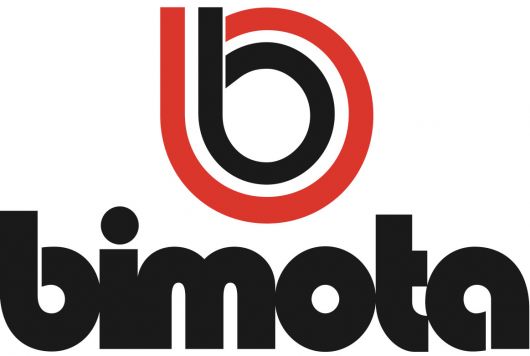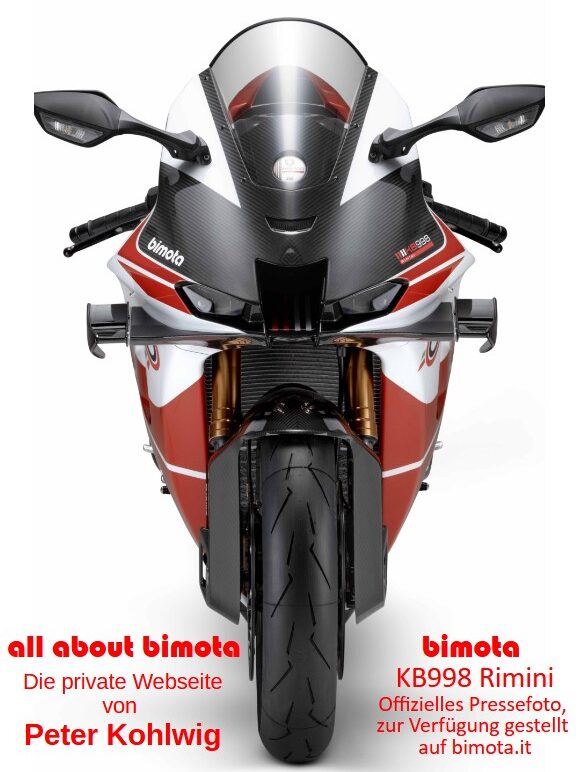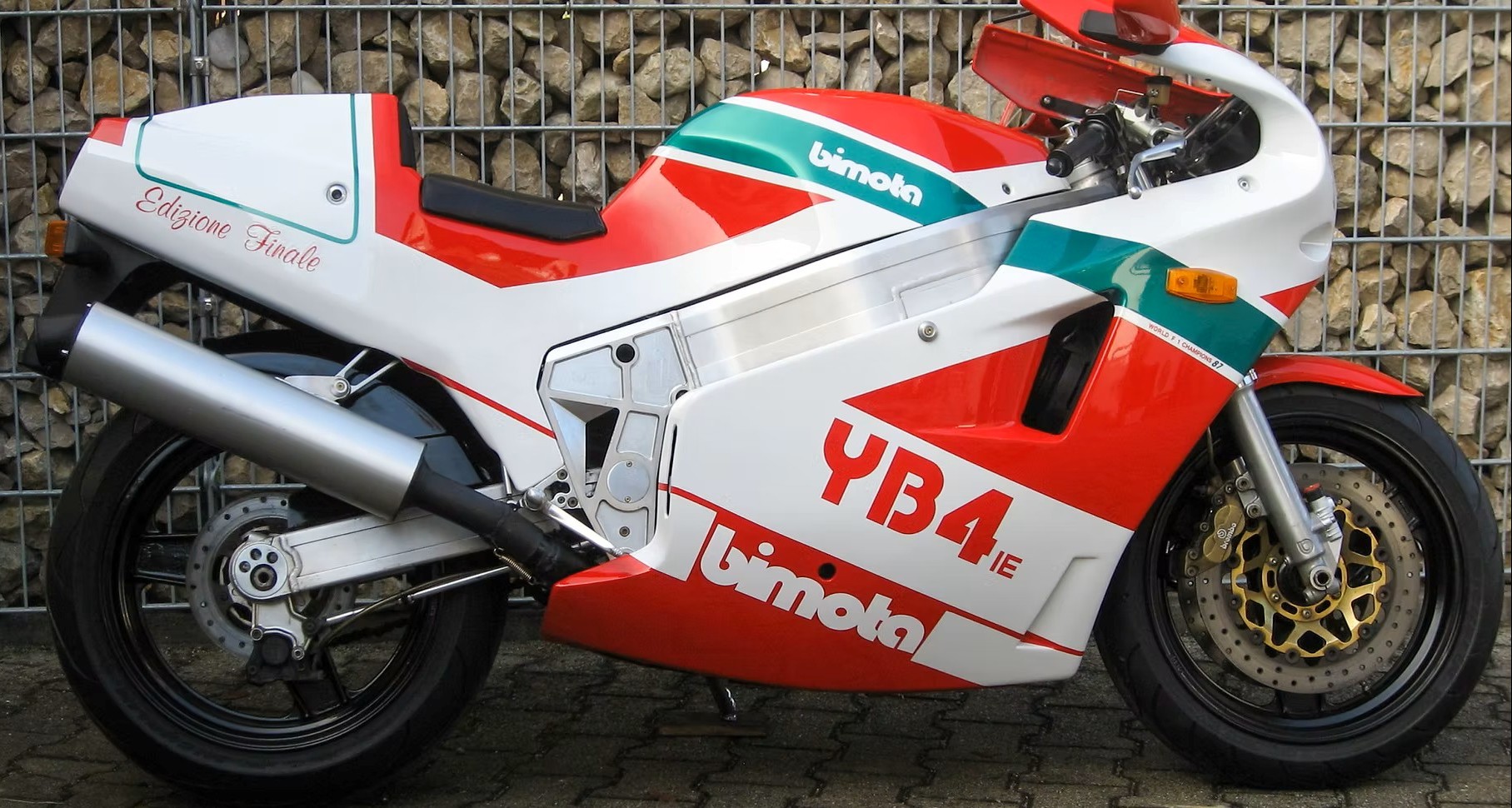
| Designer | Frederico Martini | First presentation | Milan 1987 |
| Production period | 1987 – 1989 | Production numbers | 303 plus 15 YB4 SP |
| Power | 88 KW (120 PS) | Displacement | 749 ccm |
| Topspeed | 245 km/h | Weight | Gewicht fahrbereit 200 kg Trockengewicht 180 kg |
| Price | DM 39.250 (1988) | Colours | red / white / gold 12 edizone finale in white / red / green |
| Technical basis | Yamaha FZ 750 |
In 1987, a new era began at Bimota. For the first time, the company was able to sign a contract with a mass manufacturer for the supply of components. Until then, Bimota had been dependent – except for a few exceptions (the SB2, originally by Bimota Italy, and the SB3, commissioned by Suzuki Germany) – on either purchasing complete motorcycles as donor parts or selling only kits. Since early 1987, Yamaha has been both a parts supplier and Bimota’s importer in Japan.
In the same year, Virginio Ferrari won the world championship title in the TT-F1 class— the predecessor of the Superbike World Championship, which started in 1988—riding a YB4 R, ahead of Joey Dunlop on a Honda. Davide Tardozzi finished fourth in the championship on the second YB4. The YB4’s success during the 1987 season led to seven riders in the 1988 German Superbike Championship competing with the machine.
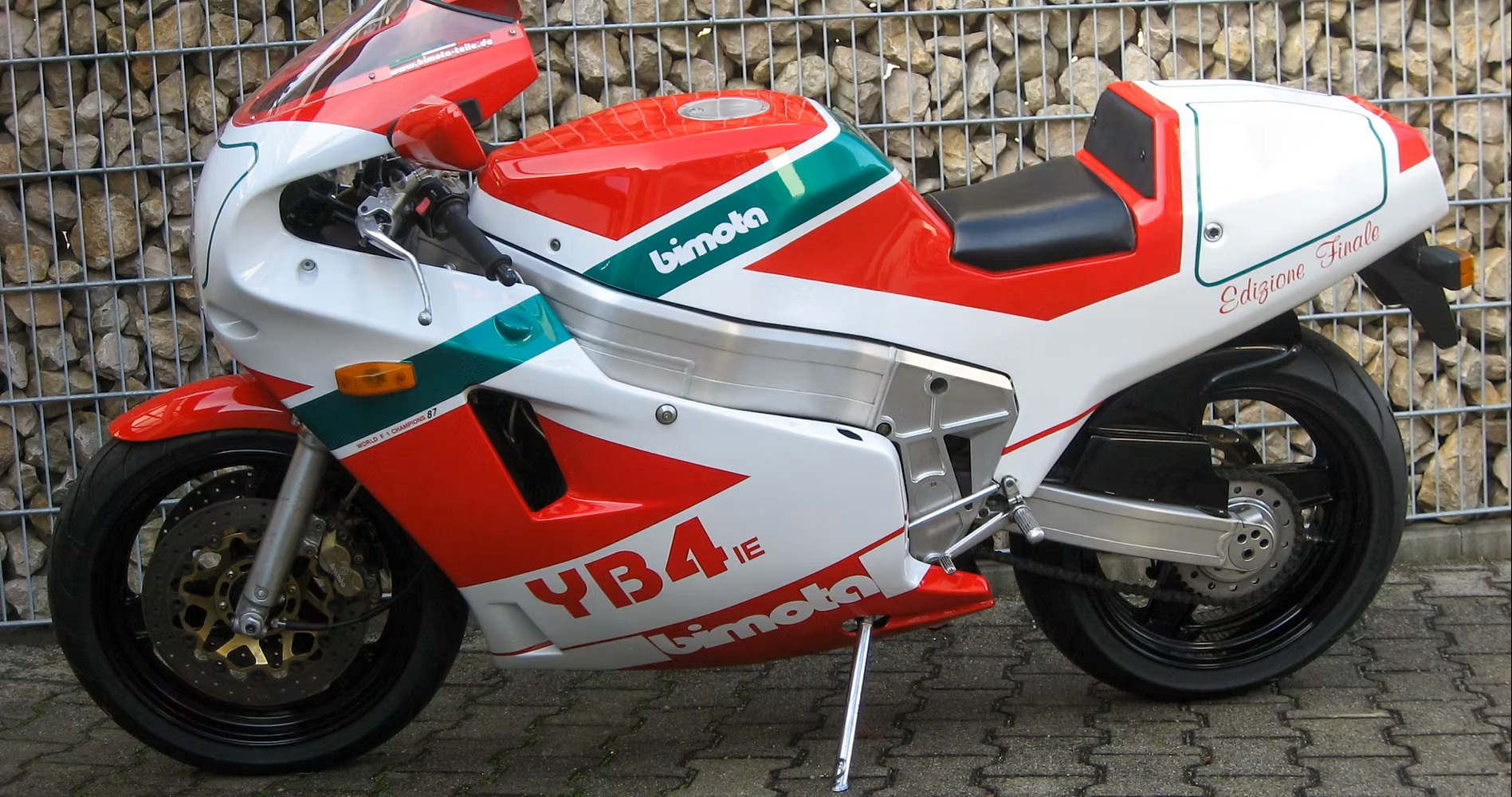
The YB4 R prototype was introduced as a race bike in Mugello in June 1986, while the YB5, based on an older steel tube frame, was officially presented in September 1986 at the International Bicycle and Motorcycle Exhibition (IFMA) in Cologne. This explains the seemingly reversed nomenclature of the Yamaha-Bimota models.
The road version of the YB4 was unveiled in Milan in 1987. It was the first Bimota road motorcycle to feature an aluminum frame, consisting of extruded profiles and aluminium billet plates, along with a bolted subframe made of aluminum rectangular profiles for mounting the rear monocoque. The extruded profiles run in a straight line alongside the engine from the steering head to the swingarm mounting plates, whose machined contours are a work of art in themselves. The alloy used, commercially known as Anticorodal (AlMgSi1), is characterized by excellent weldability, strength, machinability, and corrosion resistance. The swingarm is made of the same material.
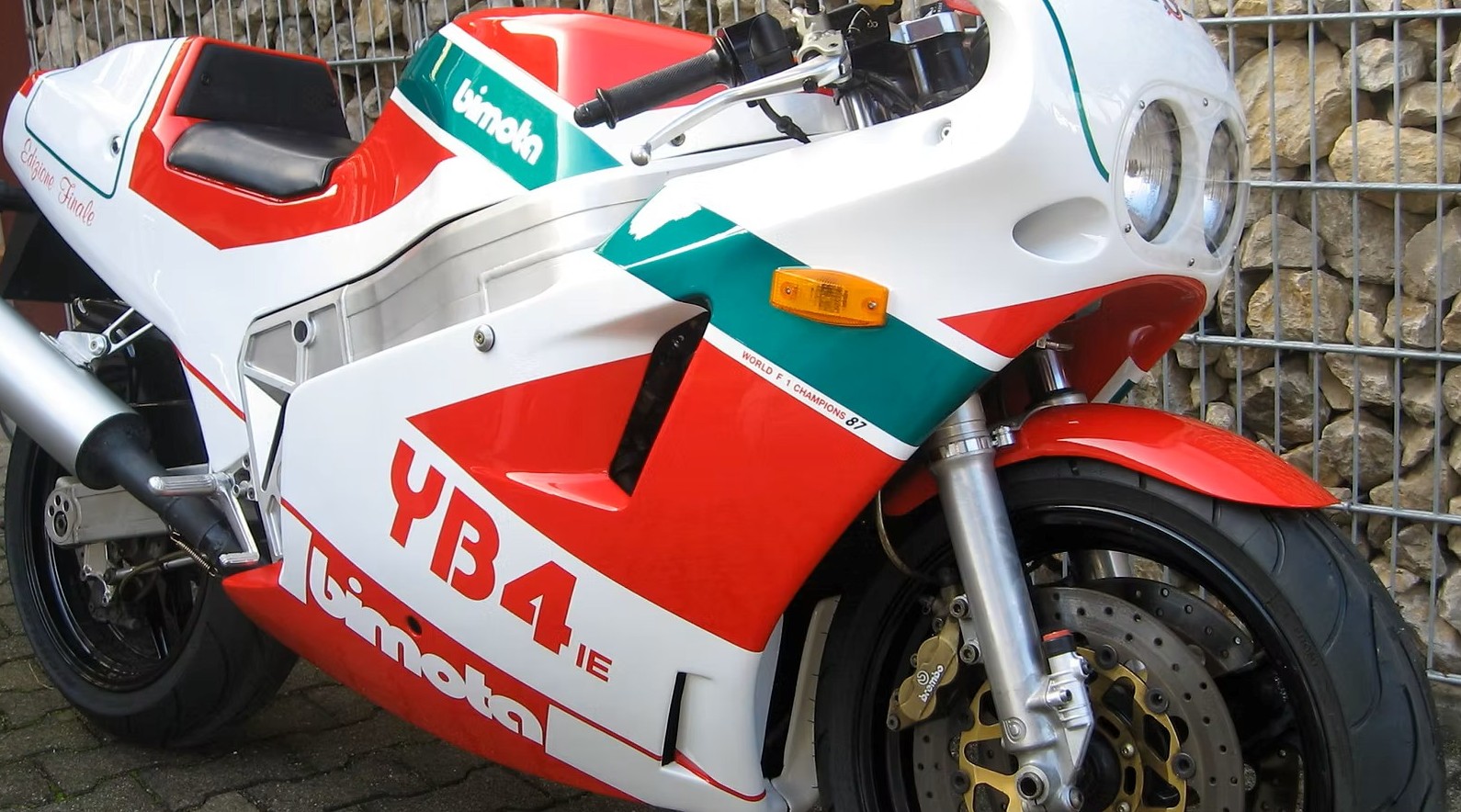
Visually and technically, the road version differs only in minor details from Virginio Ferrari’s championship-winning machine. While the YB4R in racing trim is equipped with 34mm Mikuni carburetors, the road version features a Weber-Marelli fuel injection system, which, in combination with the Yamaha FZ 750’s five-valve engine, a 4-in-1 exhaust system, and optimized intake airflow, produces 120 hp.
The motorcycle is fitted with 17” Oscam wheels – 3.5” wide at the front with 130/60 tires and 5.5” wide at the rear with 180/60 tires. The Brembo braking system includes four-piston calipers and floating 320mm discs at the front, as well as a two-piston caliper with a 230mm disc at the rear.
With a price tag of nearly 40,000 Deutsche Marks, the YB4 was the most expensive production motorcycle in the world at the time. Alongside the 303 units of the YB4 produced, 15 race-optimized YB4 SP models were built, distinguishable by their red rather than white rear number plate area
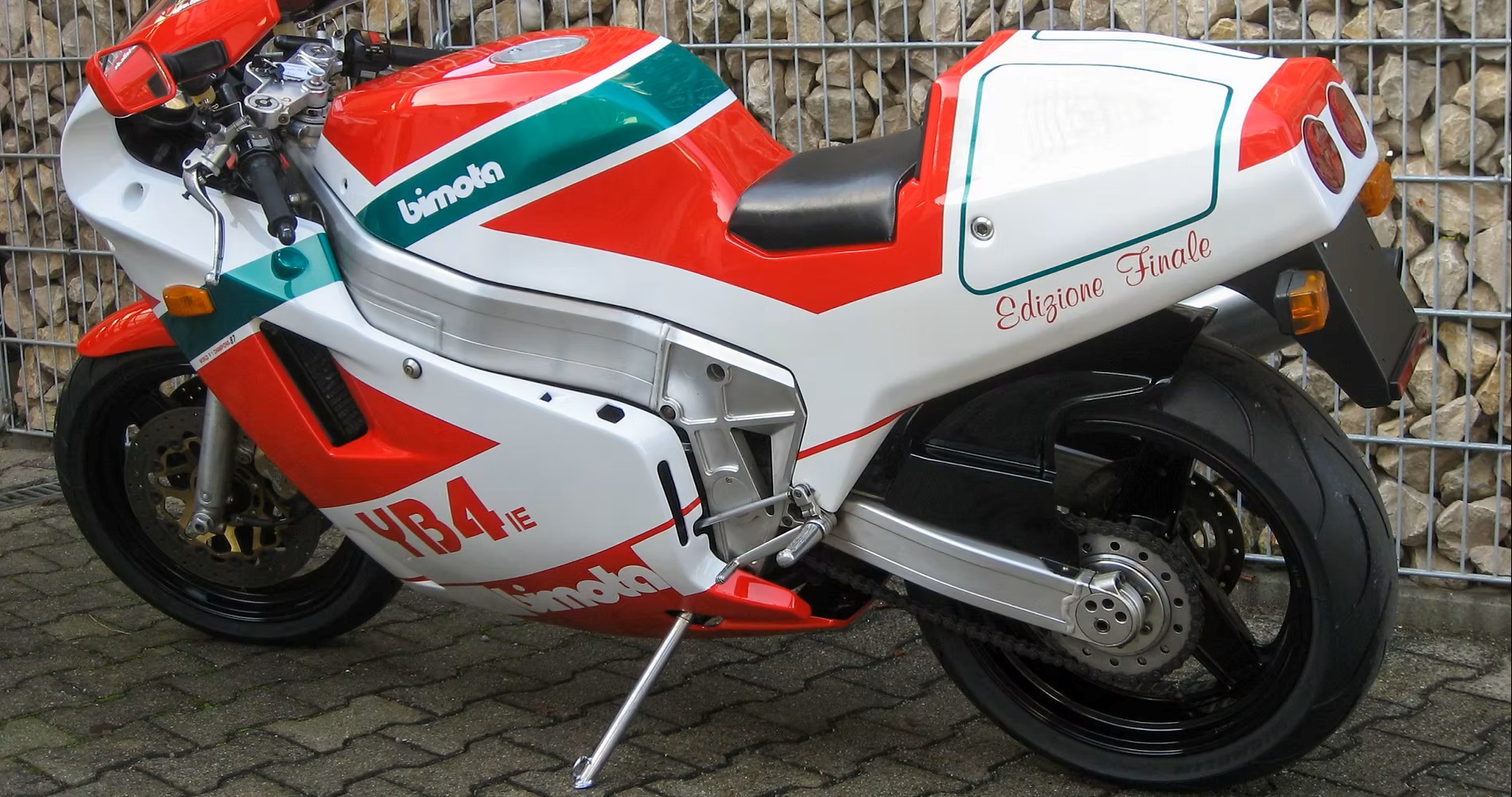
In issue 16 of 1988, the German magazine Motorrad tested the road version, highlighting its close relation to the race machine and its high-quality materials and craftsmanship:
“Bimota, on the other hand, uses premium components, whose value is only recognized by experts. The small factory in Rimini puts in remarkable effort. The aluminum chassis for the road version is identical to the world championship-winning Superbike racing frame. Massive rectangular profiles made of extruded Anticorodal 100 aluminum alloy run straight from the steering head to the swingarm mounting plates. This material comes from the aerospace industry. The side plates, meticulously crafted and milled from solid, demonstrate the same level of care. Bimota can choose a high-quality alloy, while mass-production motorcycles rely on relatively inexpensive cast components. The same meticulous effort is evident in the upper triple clamp, the triangular engine mounting plates, the suspension linkage levers, and the rear brake torque arm, all designed by Bimota engineer Frederico Martini. However, Bimota does not manufacture the frame itself – this is done by Verlicchi.”
Nevertheless, Bimota had to cut costs elsewhere to keep the selling price below 40,000 DM. The article continues:
“While Bimota spared no effort or expense in the frame, it was somewhat more frugal in selecting the suspension components and brakes. The 320mm floating discs are among the best that Brembo offers, but not the calipers. A motorcycle as exclusive and expensive as this one would have been better suited with the new four-piston calipers with different-sized pistons from the D’Oro series. Instead, Bimota owners must make do with heavier, black aluminum calipers. Instead of the high-end Brembo master cylinder with an external fluid reservoir, the YB4’s handlebars are fitted with the original Yamaha component.
In older models, Bimota still used Marzocchi forks with quick-release axles for easy wheel changes. Now, they use simpler versions with conventional clamping. However, Bimota refines the fork blanks to eliminate the typical Marzocchi stiffness during the break-in period.”
